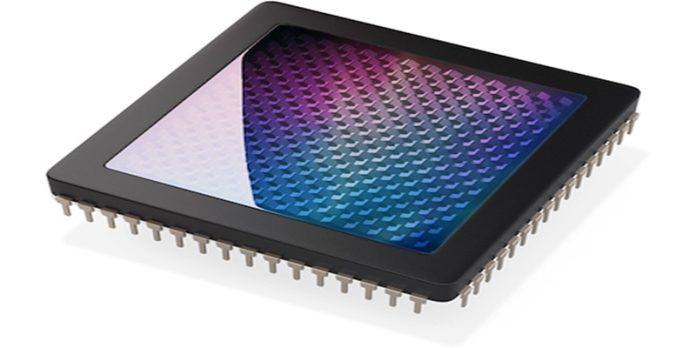Introduction: The Paradigm Shift in Material Science
Meta-materials have emerged as an innovative class of engineered materials designed to manipulate electromagnetic, acoustic, and thermal waves in unprecedented ways. Unlike conventional materials, whose properties are defined by their chemical composition, meta-materials derive their unique functionalities from carefully structured microscopic architectures. This ability to control wave propagation has opened new frontiers in electronics, enabling advanced antennas, ultra-sensitive sensors, and high-efficiency energy systems. This article explores the principles, latest advancements, applications, and future of meta-materials in electronics.
Fundamental Properties of Meta-Materials
Meta-materials exhibit unique behaviors that do not occur naturally, making them powerful tools for electronic applications. The fundamental properties include:
- Negative Refractive Index – Meta-materials can bend electromagnetic waves in the opposite direction compared to natural materials, leading to superlenses and improved signal processing in high-frequency circuits.
- Electromagnetic Bandgap (EBG) Control – They can be engineered to create selective frequency passbands and stopbands, essential for noise reduction and antenna design.
- Anisotropic Conductivity – The directional control of electrical conductivity enhances circuit efficiency and minimizes power losses.
- Subwavelength Focusing and Super-Resolution Imaging – Meta-material-based lenses enable imaging systems beyond the diffraction limit, essential for nanoscale electronics and photonics.
- Reconfigurability and Tunability – Meta-materials can dynamically alter their electromagnetic properties through external stimuli like electric fields, mechanical deformation, or temperature changes.
Applications of Meta-Materials in Next-Generation Electronics
- Meta-Material-Based Antennas: Redefining Wireless Communication
Meta-material antennas have revolutionized modern communication by offering superior performance in terms of:
- Beam Steering and Beamforming – Adaptive beam control for 5G/6G networks, reducing interference and improving data throughput.
- Miniaturization – Compact, high-efficiency antennas for IoT devices and wearable electronics.
- Enhanced Signal Propagation – Meta-material coatings reduce transmission losses and improve signal strength in urban environments.
- Ultra-Sensitive Sensors Enabled by Meta-Materials
Meta-materials play a crucial role in the development of next-generation sensors due to their ability to enhance signal detection and sensitivity. Applications include:
- Terahertz Imaging Sensors – Meta-material-based terahertz sensors offer non-invasive, high-resolution imaging for security screening and medical diagnostics.
- Environmental and Chemical Sensors – Highly selective and sensitive sensors for detecting pollutants, gases, and biological agents.
- Wearable Biosensors – Low-power, high-sensitivity sensors integrated into smart textiles for continuous health monitoring.
- High-Efficiency Electronic Circuits and Power Systems
Meta-materials contribute significantly to the development of energy-efficient electronic systems by optimizing electromagnetic wave interactions. Advancements include:
- Meta-Material Waveguides – Improved signal integrity and reduced transmission losses in high-speed computing.
- Efficient Heat Dissipation Structures – Thermal meta-materials facilitate effective cooling solutions for microprocessors and power electronics.
- Energy Harvesting and Wireless Power Transfer – Meta-material-enhanced resonators improve efficiency in inductive and resonant coupling mechanisms.
- Quantum Meta-Materials for Next-Generation Computing
The intersection of meta-materials and quantum mechanics is paving the way for advanced computing and sensing technologies:
- Meta-Material Superconductors – Novel superconducting structures for ultra-low-power electronic circuits.
- Photonic Meta-Materials for Quantum Information Processing – Enabling the development of ultra-secure quantum communication systems.
- Meta-Material-Based Quantum Sensors – Providing unprecedented precision in gravitational wave detection and navigation systems.
- Optical and Display Technologies Enhanced by Meta-Materials
Meta-materials are enabling breakthroughs in next-generation display and imaging technologies:
- Meta-Surface Optics – Flat optical components that replace bulky lenses in AR/VR systems, reducing size and weight.
- Holographic and Transparent Displays – High-efficiency meta-materials enable immersive and transparent display technologies.
- Ultra-High-Resolution Imaging – Meta-material-based superlenses enhance biomedical imaging and industrial inspection.
Recent Technological Breakthroughs in Meta-Materials
- Programmable and Reconfigurable Meta-Materials
Meta-materials with dynamically adjustable properties are shaping adaptive electronic systems. Key innovations include:
- Electrically Tunable Meta-Surfaces – Enabling real-time beam steering for adaptive radar and LiDAR applications.
- Mechanically Reconfigurable Meta-Materials – Structures that change optical or electromagnetic responses under mechanical stress.
- Smart Meta-Materials – AI-integrated meta-materials that self-optimize based on environmental conditions.
- Integration of Nano-Meta-Materials with Semiconductor Technologies
Advances in nano-fabrication techniques are allowing seamless integration of meta-materials with semiconductor devices:
- Meta-Transistors – Leveraging meta-material principles for ultra-fast and low-power electronic components.
- Nano-Photonics and Plasmonic Circuits – Ultra-efficient photonic chips utilizing meta-materials for high-speed data transfer.
- Graphene-Based Meta-Materials – Harnessing the exceptional conductivity and flexibility of graphene for futuristic electronic applications.
- Sustainable and Biodegradable Meta-Materials
The push for environmentally friendly electronics has led to the exploration of sustainable meta-materials:
- Eco-Friendly Dielectrics – Reducing toxic waste in electronic components.
- Self-Healing Meta-Materials – Extending the lifespan of electronic devices through material self-repair mechanisms.
- Recyclable and Bio-Compatible Meta-Materials – Ensuring minimal environmental impact in electronic waste management.
Challenges and Future Directions in Meta-Materials for Electronics
Despite their promising applications, several challenges remain:
- High Fabrication Complexity and Cost – Advanced manufacturing techniques are required for precise structural control at the nanoscale.
- Material Stability and Durability – Long-term reliability of meta-material structures needs improvement for commercial deployment.
- Scalability and Mass Production – Efficient large-scale production processes are needed to bring meta-material-based devices to the mainstream market.
- Regulatory and Standardization Issues – The integration of meta-materials in critical electronic systems requires adherence to safety and performance standards.
Future Outlook: Towards an Intelligent Meta-Material Era
The future of meta-materials in electronics is bright, with potential game-changing innovations:
- AI-Driven Meta-Materials – Materials that self-learn and adapt to optimize electromagnetic performance dynamically.
- Hybrid Meta-Materials and Nanotechnologies – Combining nanotechnology, AI, and meta-materials to create next-generation electronic components.
- Bio-Inspired and Biomimetic Meta-Materials – Mimicking nature’s structures for energy-efficient and high-performance electronic applications.
- Space and Aerospace Applications – Lightweight, ultra-durable meta-materials for advanced communication and defense systems.
Conclusion
Meta-materials are driving the next wave of technological advancements in electronics by enabling unprecedented control over electromagnetic properties. From high-performance antennas and quantum computing applications to AI-driven reconfigurable circuits, these engineered materials hold the potential to reshape the future of technology. As fabrication techniques advance and challenges are addressed, meta-materials will be at the core of next-generation electronic devices, pushing the boundaries of efficiency, miniaturization, and new functionalities.








